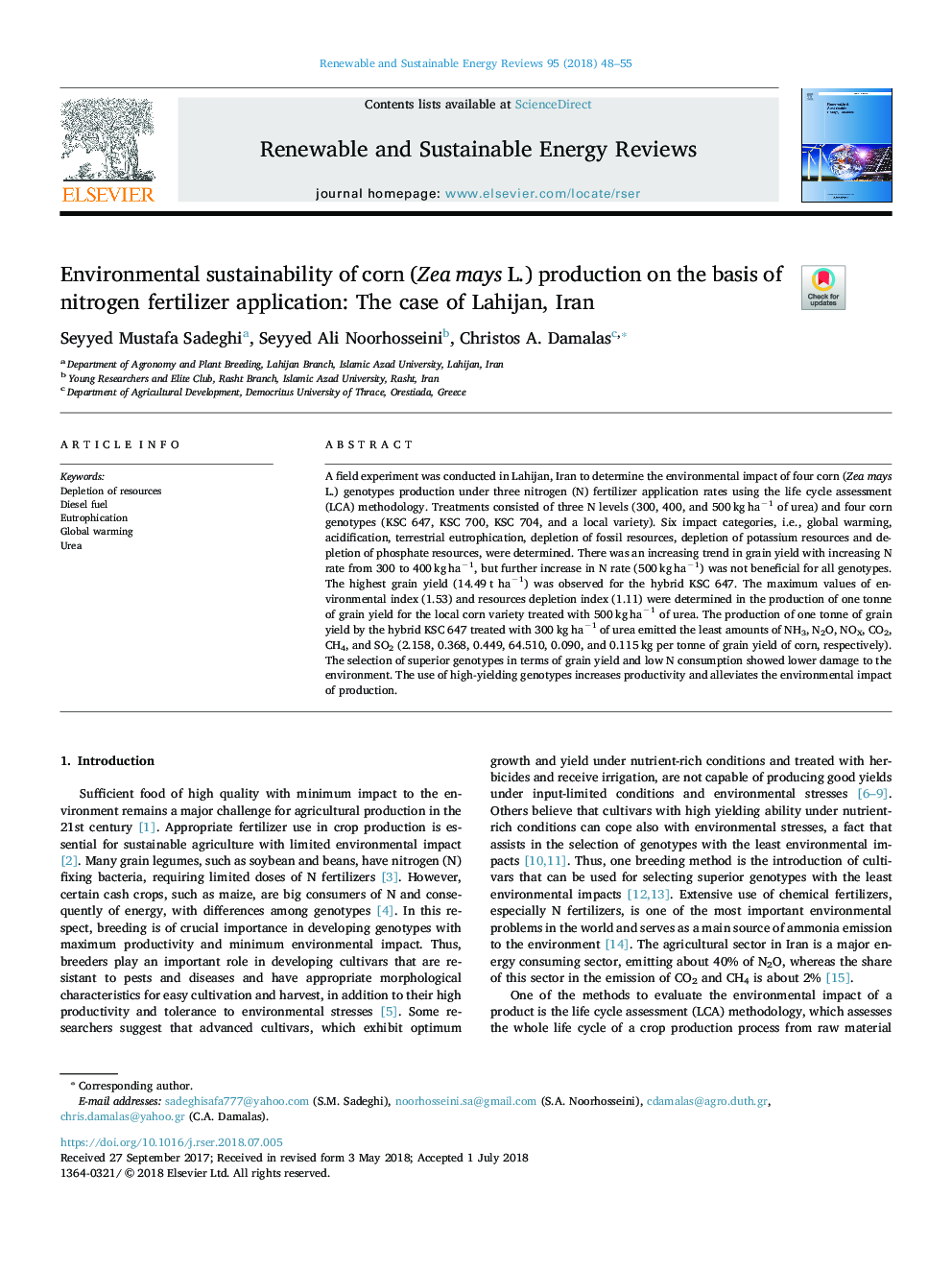| Article ID | Journal | Published Year | Pages | File Type |
|---|---|---|---|---|
| 8110263 | Renewable and Sustainable Energy Reviews | 2018 | 8 Pages |
Abstract
A field experiment was conducted in Lahijan, Iran to determine the environmental impact of four corn (Zea mays L.) genotypes production under three nitrogen (N) fertilizer application rates using the life cycle assessment (LCA) methodology. Treatments consisted of three N levels (300, 400, and 500â¯kgâ¯haâ1 of urea) and four corn genotypes (KSC 647, KSC 700, KSC 704, and a local variety). Six impact categories, i.e., global warming, acidification, terrestrial eutrophication, depletion of fossil resources, depletion of potassium resources and depletion of phosphate resources, were determined. There was an increasing trend in grain yield with increasing N rate from 300 to 400â¯kgâ¯haâ1, but further increase in N rate (500â¯kgâ¯haâ1) was not beneficial for all genotypes. The highest grain yield (14.49â¯t haâ1) was observed for the hybrid KSC 647. The maximum values of environmental index (1.53) and resources depletion index (1.11) were determined in the production of one tonne of grain yield for the local corn variety treated with 500â¯kgâ¯haâ1 of urea. The production of one tonne of grain yield by the hybrid KSC 647 treated with 300â¯kgâ¯haâ1 of urea emitted the least amounts of NH3, N2O, NOX, CO2, CH4, and SO2 (2.158, 0.368, 0.449, 64.510, 0.090, and 0.115â¯kg per tonne of grain yield of corn, respectively). The selection of superior genotypes in terms of grain yield and low N consumption showed lower damage to the environment. The use of high-yielding genotypes increases productivity and alleviates the environmental impact of production.
Related Topics
Physical Sciences and Engineering
Energy
Renewable Energy, Sustainability and the Environment
Authors
Seyyed Mustafa Sadeghi, Seyyed Ali Noorhosseini, Christos A. Damalas,
